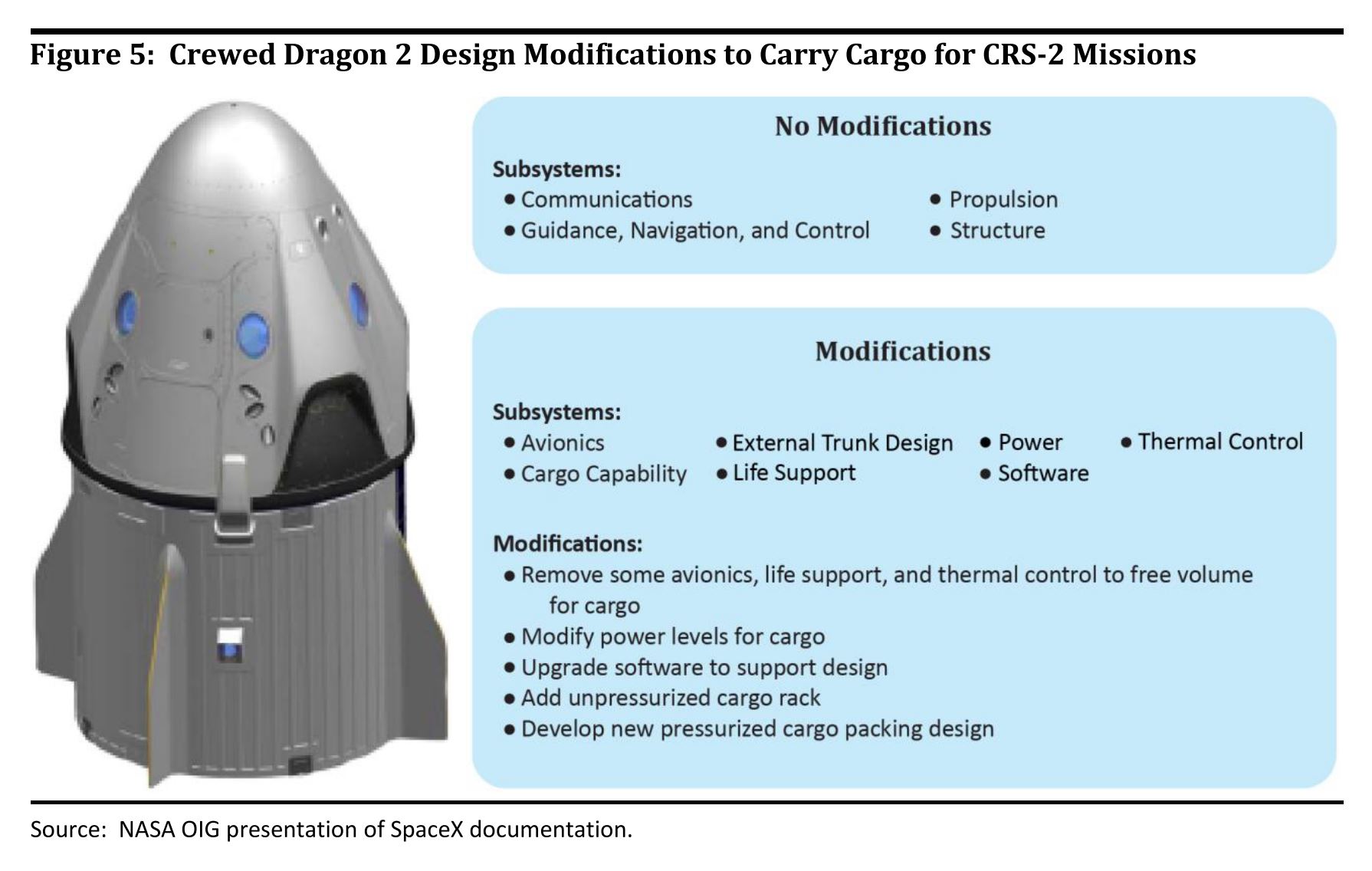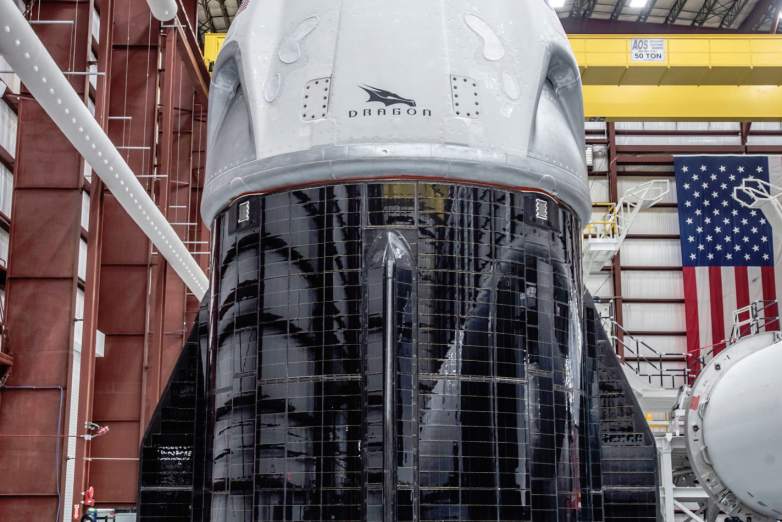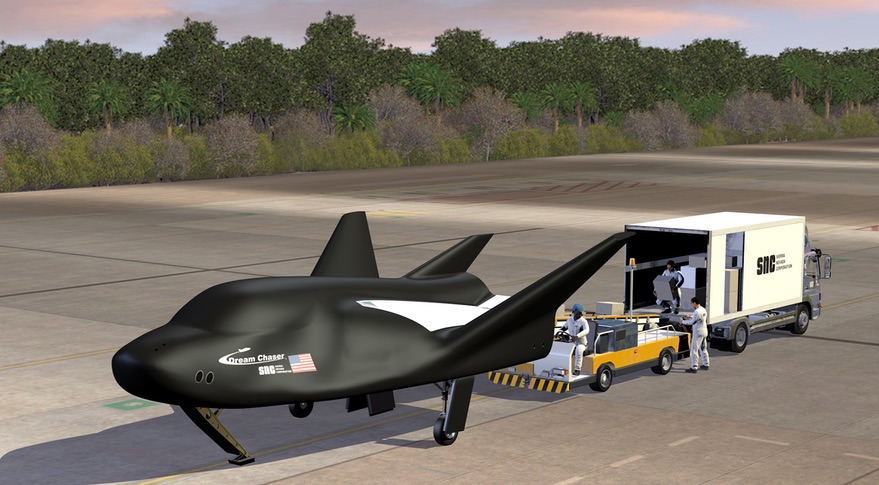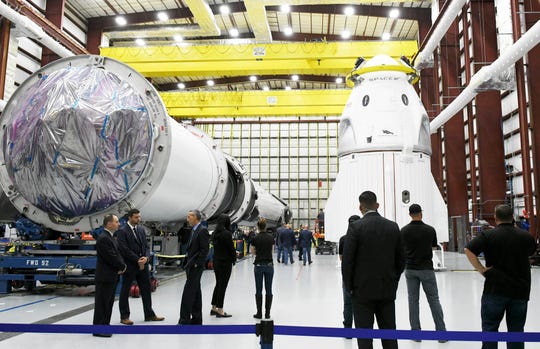New Mars Forums
You are not logged in.
- Topics: Active | Unanswered
Announcement
#151 2017-07-15 11:05:25
- Oldfart1939
- Member
- Registered: 2016-11-26
- Posts: 2,488
Re: COTS - status
I'm not really a "betting man," but more of a "prognosticating person." I'm "prognosticating" that Boeing and the Starliner will slip to late 2019 for their first missions. Unmanned. Overweight was a direct function of the Ares I "pogo-stick" rocket, (even tho' they called it the 'stick' in private, I inserted the pogo prefix). I seem to recall GW mentioning that the longitudinal vibrations required a heavier spacecraft, which ultimately resulted in an inability of the "as designed' system to achieve orbit because it was too heavy? Peeling weight from a finalized design is damnably difficult!
Offline
Like button can go here
#152 2017-07-15 11:26:41
- SpaceNut
- Administrator
- From: New Hampshire
- Registered: 2004-07-22
- Posts: 29,881
Re: COTS - status
Yes longitudinal just like in a pipe organs resonance sound since they changed the length from 4 segments to 5 the resulting pitch changed.
As for Boeing and even of space x date slips is that being caused by Nasa?
Offline
Like button can go here
#153 2017-07-15 11:51:23
- Oldfart1939
- Member
- Registered: 2016-11-26
- Posts: 2,488
Re: COTS - status
As for Boeing and even of space x date slips is that being caused by Nasa?
Short answer: no.
Offline
Like button can go here
#154 2018-08-11 19:48:03
- SpaceNut
- Administrator
- From: New Hampshire
- Registered: 2004-07-22
- Posts: 29,881
Re: COTS - status
Nasa is still trying to seed the industry...
NASA invests in concepts for a vibrant future commercial space economy
Yes we do know many of the name list:
The selected companies are:
+ Axiom Space, LLC, of Houston
+ Bigelow Aerospace, LLC of Las Vegas
+ Blue Origin, LLC, of Kent, Washington
+ The Boeing Company of Houston
+ Deloitte Consulting of Manhattan Beach, California
+ KBRWyle of Houston
+ Lockheed Martin Corporation of Littleton, Colorado
+ McKinsey and Company, Inc. of Washington, D.C.
+ NanoRacks, LLC, of Webster, Texas
+ Northrop Grumman of Dulles, Virginia
+ Sierra Nevada Corporation of Louisville, Colorado
+ Space Adventures, Inc., of Vienna, Virginia
+ Space Systems/Loral, Inc. of Palo Alto, California
NASA estimates the combined value of all awards will be approximately $11 million, with each contract not to exceed $1 million.
Offline
Like button can go here
#155 2018-09-04 19:40:37
- SpaceNut
- Administrator
- From: New Hampshire
- Registered: 2004-07-22
- Posts: 29,881
Re: COTS - status
It does not matter which vehicle launches first.
Wrong
Commercial Crew assignments announced today. Remember, the first crew to the ISS on a commercial vehicle gets to "Capture The Flag" left by the crew of STS-135/Atlantis in 2011!
That's how long the most powerful country on Earth has been unable to launch its own astronauts.
7 years of paying for a USA seat onboard a Soyuz.....
Offline
Like button can go here
#156 2018-09-12 17:25:20
- SpaceNut
- Administrator
- From: New Hampshire
- Registered: 2004-07-22
- Posts: 29,881
Re: COTS - status

The two companies must each execute two test flights to the International Space Station (ISS) in order to be certified to perform operational crew rotation missions.
On the SpaceX side, the company will first execute an uncrewed test flight of the Crew Dragon spacecraft called Demonstration Mission 1 (DM-1) – currently scheduled for this coming November. It will then be followed by a crewed test flight designated Demonstration Mission 2 (DM-2). In between the two missions, SpaceX will also execute an in-flight abort test.
In terms of Boeing, they will perform an uncrewed Orbital Flight Test (OFT) with the CST-100 Starliner followed by a Crewed Flight Test (CFT). A pad abort test will be also conducted between the two missions.




Offline
Like button can go here
#157 2018-11-05 22:24:39
- SpaceNut
- Administrator
- From: New Hampshire
- Registered: 2004-07-22
- Posts: 29,881
Re: COTS - status

Offline
Like button can go here
#158 2018-11-24 18:54:03
- SpaceNut
- Administrator
- From: New Hampshire
- Registered: 2004-07-22
- Posts: 29,881
Re: COTS - status
Houston, Nasa has a problem
Elon Musk's Weed Puff Spurs NASA Safety Review of SpaceX, Boeing: Report
The review, which is expected to begin next year and take months to complete,
Legal some places but its not culture for federal levels
Offline
Like button can go here
#159 2018-11-27 20:55:42
- SpaceNut
- Administrator
- From: New Hampshire
- Registered: 2004-07-22
- Posts: 29,881
Re: COTS - status
The next space x flight is schedueled for Jan. 7 date set for first SpaceX unmanned capsule to International Space Station This is the Crew Dragon's commercial flight will be known as Demo-1 or DM-1 only with no one on board.

Offline
Like button can go here
#160 2018-12-16 18:50:07
- SpaceNut
- Administrator
- From: New Hampshire
- Registered: 2004-07-22
- Posts: 29,881
Re: COTS - status
SpaceX, NASA Push 1st Crew Dragon Test Flight Back to Jan. 17
SpaceX and NASA have pushed the first test flight of the Crew Dragon capsule back by 10 days, partly to avoid a traffic jam at the International Space Station (ISS). That's four days after one of Crew Dragon's robotic, cargo-carrying cousins departs the orbiting lab.
The cookies will be long gone andthe presents claimed from the Dragon that will be hauling garbage back doen.
One could only wish for traffic to space being that high all the time.
SpaceX holds a multibillion-dollar commercial-crew contract with NASA, as does aerospace giant Boeing. Boeing is developing a capsule called the CST-100 Starliner, which is scheduled to fly its first uncrewed test mission in the spring of 2019.
Once Crew Dragon and Starliner are up and running, NASA will no longer be entirely dependent on Russian Soyuz rockets and spacecraft to get American astronauts to and from the ISS. This has been the situation since July 2011, when NASA grounded its space shuttle fleet.
SpaceX also holds a cargo contract with NASA and has flown 16 resupply missions to the orbiting lab since 2010. Northrop Grumman makes ISS cargo flights as well, using Antares rockets and Cygnus freighters.
Offline
Like button can go here
#161 2018-12-19 21:36:03
- SpaceNut
- Administrator
- From: New Hampshire
- Registered: 2004-07-22
- Posts: 29,881
Re: COTS - status
SpaceX shows off Crew Dragon’s integrated solar panels for the first time

These panels are covered by a shroud that is jettisoned, exposing them to sunlight after the ship is already outside of Earth’s atmosphere.
The page has a full scale view as well with the capsule and trunk....
Offline
Like button can go here
#162 2018-12-20 19:03:26
- SpaceNut
- Administrator
- From: New Hampshire
- Registered: 2004-07-22
- Posts: 29,881
Re: COTS - status
Dream Chaser cleared to begin full-scale production Commercial Resupply Services (CRS) 2 contract

SNC was one of three companies, along with incumbents SpaceX and Orbital ATK (now Northrop Grumman Innovation Systems), to receive CRS-2 contracts from NASA in January 2016. Each company is guaranteed at least six missions to the ISS under the contracts.
To carry out the missions, SNC proposed a cargo version of the Dream Chaser spacecraft it had been developing for NASA’s commercial crew program. Although the vehicle was not selected by NASA when it awarded contracts instead to Boeing and SpaceX in 2014, SNC adapted the design with foldable wings, allowing it to fit within many existing payload fairings, and a cargo module.
The cargo version of Dream Chaser can carry up to 5,500 kilograms of cargo to the International Space Station and return 1,850 kilograms to Earth in a runway landing. The cargo module, which burns up on reentry, can dispose of an additional 3,400 kilograms of cargo.
The first Dream Chaser launch, on a United Launch Alliance Atlas 5, is planned for no earlier than late 2020, a date that will depend on the status of vehicle development and cargo needs for the ISS.
Offline
Like button can go here
#163 2018-12-31 21:57:26
- SpaceNut
- Administrator
- From: New Hampshire
- Registered: 2004-07-22
- Posts: 29,881
Re: COTS - status
SpaceX Demo Flight 1 ‘adjusts’ 10 day
NASA and its commercial space partner, SpaceX, have pushed back the planned Jan. 7 2019 launch date of the Crew Dragon’s Demo Flight 1 (a test flight with no astronauts on board) by 10 days to Thursday, Jan 17.
“The key readiness reviews along with NASA’s continued analysis of hardware and software testing and certification data must be closed out prior to launch. The upcoming steps before the test missions are critical, and their importance can’t be understated. We are not driven by dates, but by data.
Offline
Like button can go here
#164 2019-01-01 12:37:09
- Oldfart1939
- Member
- Registered: 2016-11-26
- Posts: 2,488
Re: COTS - status
The final Iridium Next mission (number 8) is now scheduled from Vandenberg on 8 Jan, 2019.
Offline
Like button can go here
#165 2019-01-19 20:19:14
- SpaceNut
- Administrator
- From: New Hampshire
- Registered: 2004-07-22
- Posts: 29,881
Re: COTS - status
Jeff Bezos on going to space vs. making Earth better: ‘It shouldn’t be either-or’
Blue Origin plays a big part in that long-range portfolio. The company is working on a suborbital spaceship called New Shepard, an orbital-class rocket called New Glenn, a new breed of rocket engine called the BE-4, and a lunar lander concept called Blue Moon.
New Shepard and suborbital spaceflights, including passenger flights, represent the first step because “the frequency of those missions can be very high,” providing lots of practice for more challenging missions,
Offline
Like button can go here
#166 2019-01-24 18:22:38
- SpaceNut
- Administrator
- From: New Hampshire
- Registered: 2004-07-22
- Posts: 29,881
Re: COTS - status
First flight even unmanned has not flown and Nasa is changing up the first crewed flight...
NASA Switches Astronaut on Boeing's 1st Crewed Starliner Spacecraft Test Flight
NASA has announced a crew change for Boeing Starliner's first crewed flight, assigning veteran astronaut Mike Fincke to the flight after Eric Boe was pulled for medical reasons.
The crewed test flight is due to launch in the second half of this year, assuming that an uncrewed test flight currently scheduled for the spring goes smoothly. Fincke will fly with NASA astronaut Nicole Aunapu Mann and Boeing astronaut Chris Ferguson, who previously flew for NASA.
"Fincke takes the place of astronaut Eric Boe, originally assigned to the mission in August 2018," NASA officials said in a statement. "Boe is unable to fly due to medical reasons; he will replace Fincke as the assistant to the chief for commercial crew in the astronaut office at NASA's Johnson Space Center." [Here's Who's Flying on SpaceX's and Boeing's 1st Crewed Flights
Offline
Like button can go here
#167 2019-01-27 18:53:30
- SpaceNut
- Administrator
- From: New Hampshire
- Registered: 2004-07-22
- Posts: 29,881
Re: COTS - status
Moving forward SpaceX Test Fires Rocket for 1st Crew Dragon Launch in February and could fly no earlier than Feb. 23.
The new Crew Dragon includes life support systems, a launch escape system, solar panels built into the capsule's "trunk" service module and other advancements over its predecessor.
NASA awarded SpaceX a $2.6 billion contract to build a crewed version of Dragon (which SpaceX intially called Dragon 2) in 2014.
Boeing recieved a separate NASA contract for $4.2 billion to develop its crewed CST-100 Starliner vehicle to fly astronauts for NASA. Both companies are expected to launch their first crewed flights later this year.
Offline
Like button can go here
#168 2019-02-03 20:34:22
- SpaceNut
- Administrator
- From: New Hampshire
- Registered: 2004-07-22
- Posts: 29,881
Re: COTS - status
Boeing's Starliner Spacecraft Will Be Ready for 1st Test Flight in March
Boeing's CST-100 Starliner won't be taking any astronauts along for its first flight to the ISS, however. After docking robotically with the orbiting lab, it will return to Earth for a parachute landing in Texas.
If this test flight goes according to plan, Boeing will be ready to launch its first crew of astronauts to the space station in August, Boeing spokesperson Maribeth Davis told Space.com during a presentation of Boeing's future vision for space travel here.
Offline
Like button can go here
#169 2019-02-09 18:05:28
- SpaceNut
- Administrator
- From: New Hampshire
- Registered: 2004-07-22
- Posts: 29,881
Re: COTS - status
Shutdown delay caused SpaceX targeting March launch of Crew Dragon test flight from KSC

Offline
Like button can go here
#170 2019-02-10 11:45:59
- GW Johnson
- Member
- From: McGregor, Texas USA
- Registered: 2011-12-04
- Posts: 6,101
- Website
Re: COTS - status
Coincidentally (or not), this also reduced the interval between Spacex's first flight and favored-giant Boeing's first flight.
GW
GW Johnson
McGregor, Texas
"There is nothing as expensive as a dead crew, especially one dead from a bad management decision"
Offline
Like button can go here
#171 2019-02-10 13:40:38
- SpaceNut
- Administrator
- From: New Hampshire
- Registered: 2004-07-22
- Posts: 29,881
Re: COTS - status
Try number 2 for this post...
Since its the first flights of both they can not have anything amiss as these are for making sure we can Human rate each vehicle and launcher as well.
That said Space x needs to keep the Falcon 9 and its heavy version still going long after BFR starts to fly as one size does not fit all missions.
I think the flack over using Russian engines is crap but for the partnership of Boeing and Lockheed plus ULA they will need to stick with what works even with a new launcher coming for them.
Offline
Like button can go here
#172 2019-02-16 16:44:13
- SpaceNut
- Administrator
- From: New Hampshire
- Registered: 2004-07-22
- Posts: 29,881
Re: COTS - status
The good news signed by the president is Newly signed funding bill gives NASA’s budget a significant boost
The legislation, which funds the federal government through September 30th, 2019, would give NASA $21.5 billion — an increase over last year’s budget of $20.7 billion and much more than the $19.9 billion the agency asked for.
Practically every major program within NASA will receive a boost. The agency’s science programs, which cover planetary missions and Earth science, will receive a total $6.9 billion, up from $6.2 billion from last year. The human exploration program will get $5 billion, while it got $4.79 billion in 2018.
Of course with the delays NASA to buy seats on Russian Soyuz through 2020 for ISS trips
NASA has been using the Russian Soyuz vehicle for trips to the International Space Station since 2011, but it’s working to change that with its commercial crew program. Despite progress, a safety panel published a report last year pointing toward delays in the program, warning that NASA needed a contingency plan in order to avoid disruption to its ISS operations.
PROCUREMENT OF CREW TRANSPORTATION AND RESCUE SERVICES FROM ROSCOSMOS
6 month cycles to and from ISS requires 2 seats to be purchased per year.
Since no American rocket is flying yet we are still reliant of Russia for being able to use our part of the ISS.
Offline
Like button can go here
#173 2019-04-03 16:35:08
- SpaceNut
- Administrator
- From: New Hampshire
- Registered: 2004-07-22
- Posts: 29,881
Re: COTS - status
Probably due to needing to sink there efforts into the SLS getting on the new timeline as Boeing’s first crewed flight to space station gets extension and delay of course using another excuse for launch vehicle scheduled window for the flight....
Offline
Like button can go here
#174 2019-04-03 17:17:39
- kbd512
- Administrator
- Registered: 2015-01-02
- Posts: 8,347
Re: COTS - status
SpaceNut,
If there's a manned flight later this year, then that negates the requirement to purchase seats from the Russians. My take on this is that it's good to keep all of our options open. My preference is to have 3 human space flight qualified vehicles (Dragon 2, StarLiner, DreamChaser) and 3 launch services providers (SpaceX, ULA, Orbital ATK). If something happens to one and it takes time to investigate what happened, then there are still backup providers available for NASA to use.
Like it or not, the Russians are also our partners aboard ISS and that is how we should view their space flight program, irrespective of our profound political differences. The Russian's astronaut training program is so good, because it focuses on absolute mastery of the fundamentals, that we send our astronauts to Russia for training. Should we have our own program modeled after their program? Probably. Are we going to do that any time soon? Probably not.
I would love to have a single seat space capsule that uses StratoLaunch for "any time" / "any place" launches to ISS or LEO. It would use an Orbital ATK solid rocket booster in conjunction with a Rocketdyne RL-10 powered upper stage. Why do we need 7 seat capsules to send 1 or 2 astronauts into orbit to rendezvous with a much larger vehicle / payload? We're still trying to cram the cargo in with the astronauts. That's the exact opposite of what we said we would never do again. This could easily be in the $5M range per launch with economies of scale. It's still expensive, but cheaper for crew support that may only replace a single crew member with a new one.
Offline
Like button can go here
#175 2019-04-04 07:00:29
- Terraformer
- Member
- From: The Fortunate Isles
- Registered: 2007-08-27
- Posts: 3,988
- Website
Re: COTS - status
Could we develop one from this?
https://en.wikipedia.org/wiki/Boeing_X-37
The payload bay is just about big enough to fit someone in in a recumbent position. Maybe two.
Use what is abundant and build to last
Offline
Like button can go here

